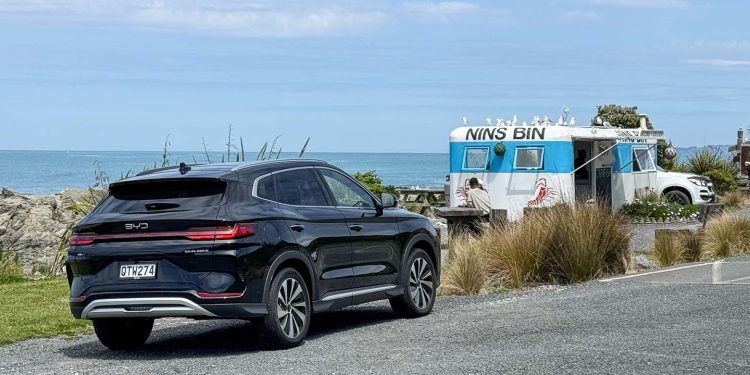2024 BYD Sealion 6 Dynamic PHEV review and range test
Words/Photos: Richard Edwards
Timaru; I don’t know much about the place other than it was the subject of the alt-anthem “Today, Tomorrow, Timaru”.
Thanks to Deja Voodoo I know there’s a beach there called Caroline Bay and that the route between Timaru and Christchurch includes (in sung order) Washdyke, Temuka, Dunsandel, Rolleston, Templeton, Hornby, and Rakaia.
What I did know was that, having passed through all those towns, this was as far south as we were willing to head on our challenge to see how far BYD’s Sealion 6 could travel on a single tank. We were done, even though the car was not.
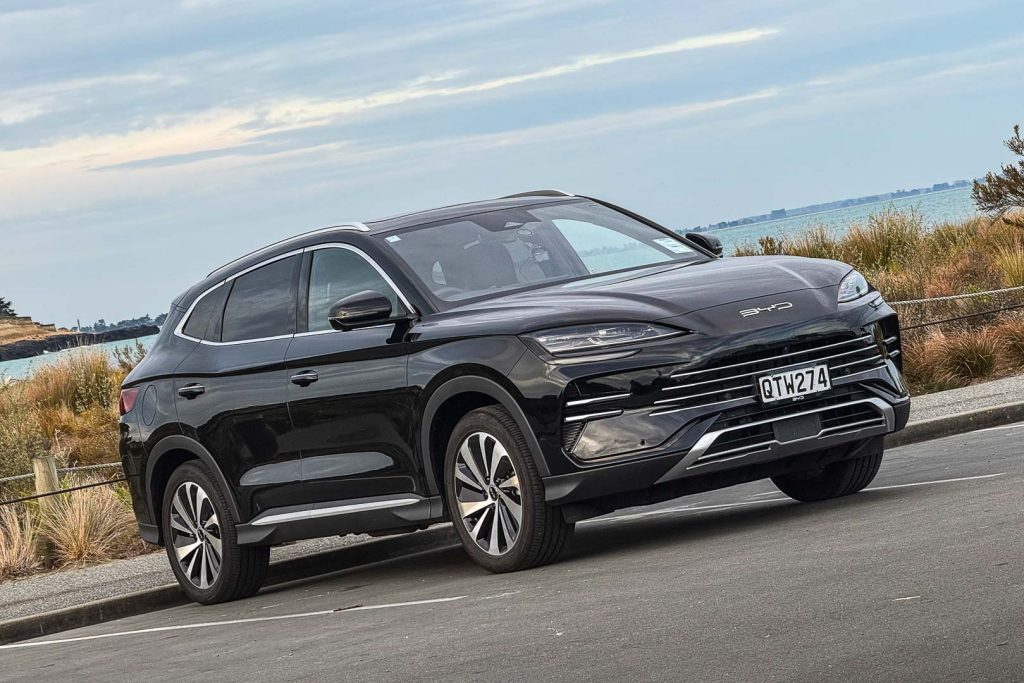
It was 8.30pm and my colleague Graeme and I had been on the road for nearly 24 hours. The previous night, at 10pm, we departed Auckland in the Dynamic version of BYD’s first local plug-in hybrid offering.
Topped up with fuel and battery charged, the plan was to get to a function in Christchurch on one tank and battery charge.
The rules: normal driving at the speed limit, including 110km/h roads, climate control on, and no weight savings; not that we had the choice with a load of magazines, camera equipment, and, oddly, Christmas presents a staffer had snuck aboard at the last minute.
Our target was Cathedral Square, 991km away. BYD boldly claims the Sealion can travel 1,070km, but I take that kind of claim with a grain of salt.
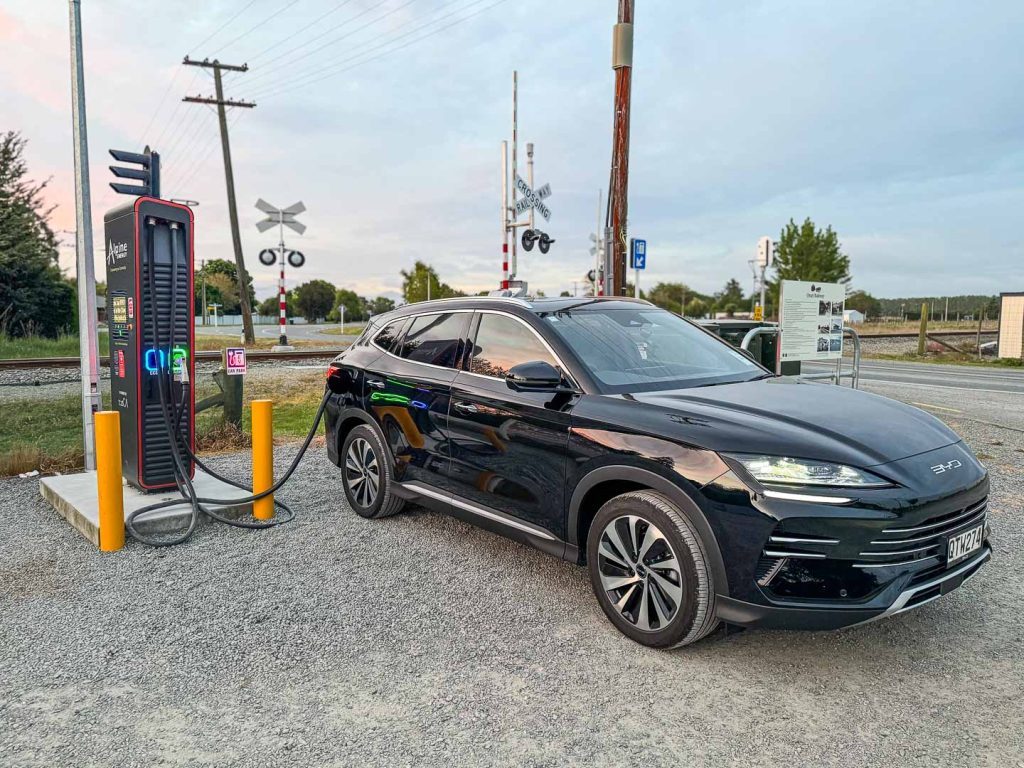
Such measurements are usually best-case scenarios, the vehicle lightly loaded and lightly driven. I proudly predicted we would fall short.
The Sealion 6
The BYD Sealion 6’s DM-i plug-in hybrid platform combines an electric motor system with a petrol engine that predominantly acts as a generator, the electrics doing most of the driving.
This offers an electric range of 81–92km, courtesy of its 18.3kWh Blade (LFP) battery. Charging is slow by EV standards but fast for a PHEV, with a 2.7-hour recharge via a wallbox or a 30-minute top-up using a DC fast charger.
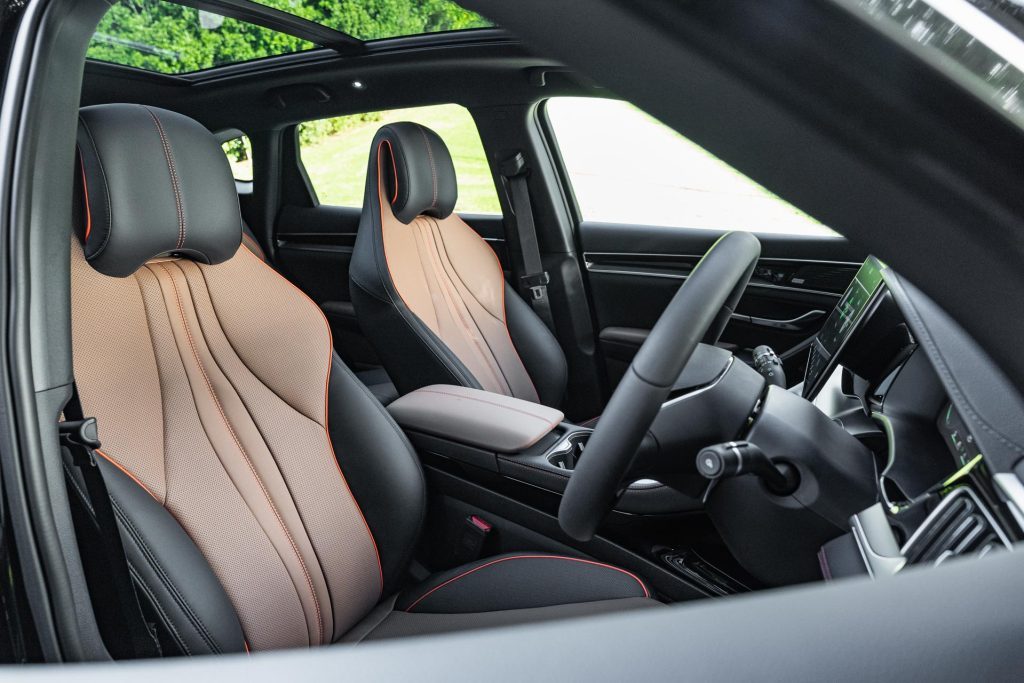
The $57,990 Dynamic features a 72kW/122Nm 1.5 engine paired with a 145kW/300Nm motor which delivers a total system output of 160kW and 300Nm, achieving 0–100km/h in 8.5 seconds.
Fuel efficiency is a claimed 1.1L/100km, though that is based on a combined cycle with a full battery on a relatively short test cycle. Don’t plug it in regularly and expect 4–6 litres per 100km.
For many users, the Sealion 6 will rarely use petrol, rolling on just electric power for daily use. Some will use so little fuel that BYD tests the condition of the petrol at services to see if it is too old and needs to be removed.
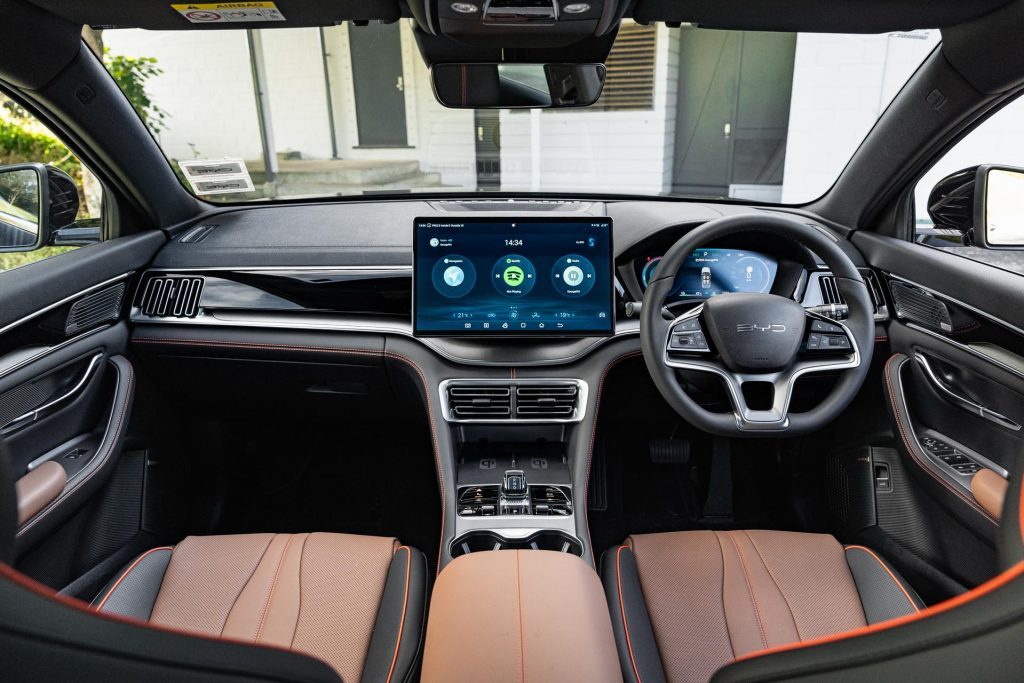
On the road, the Sealion 6 feels refined, with near-silent operation and minimal wind or road noise. Ride is more comfort-oriented than performance, but it suits the nature of the vehicle and rarely fatigued us in 22 hours on the road.
Rear-seat space is ample, with adjustable backrests, and boot capacity ranges from 425 to 1440 litres. Did we mention it just landed the AA Driven New Zealand Car of the Year?
Sure, that gong isn’t as prestigious as Autocar’s own award but it is impressive.
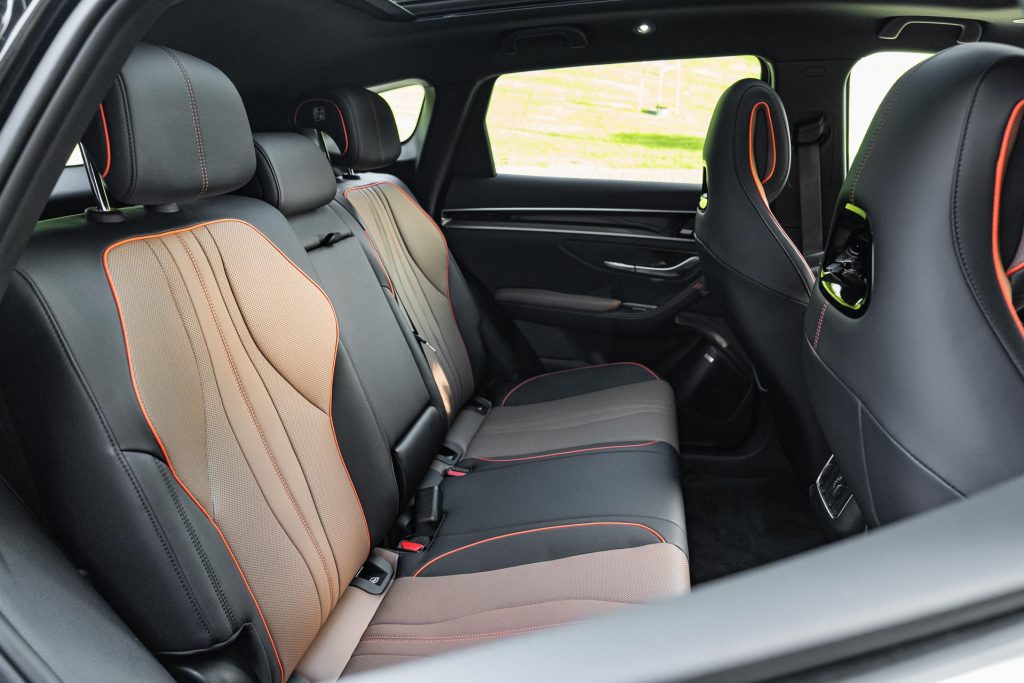
The Trip
And we are off, with the car registering an indicated range of 1093km. It is set to Eco mode, and at the suggestion of BYD, the amount of battery kept in reserve for hybrid use—so the amount the vehicle can run down to in electric—is 25 per cent.
60km:
The petrol engine kicks in for the first time with 40 per cent of battery charge remaining. It quickly cuts off again, and we don’t hear from it again for another 15km. The predicted range has actually gone up to 1095km.
There is not much to tell through the night as we make our down the North Island; we take turns sleeping and navigating the horrendous Waikato diversions currently in place. USB-C chargers keep our devices topped up, while we resort to Boss canned coffee.
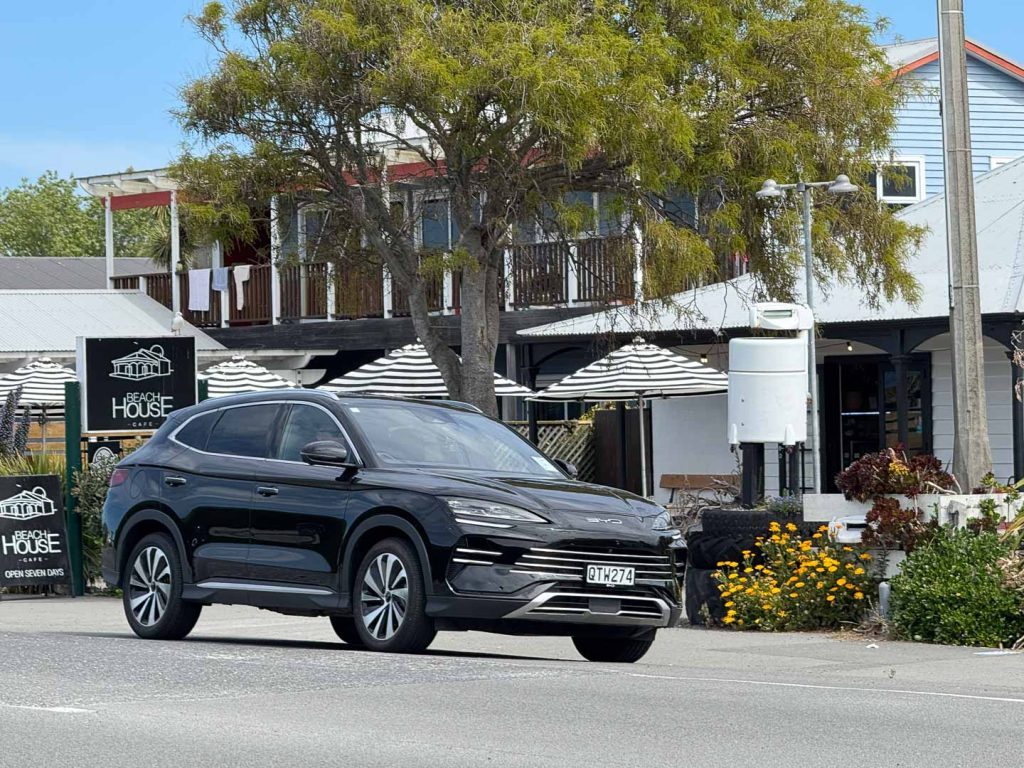
661km:
We arrive at the Bluebridge Ferry terminal in Wellington, the trip computer showing an average of 5.2L/100km. The remaining range shows 499km, and a theoretical total range of 1160km.
We book a cabin to get a good few hours’ sleep on the ferry. Don’t drive tired. More on that later.
818km:
We have made it to Kaikoura, and it’s time for a late lunch and to explain to a bewildered American motorbike tourist our wee experiment.
The car is still showing 302km of range remaining, though some enjoyable driving along the coast north of Kaikoura seemed to be accelerating the pace. With 182km to run to the Cathedral, it is clear we are going to make it.
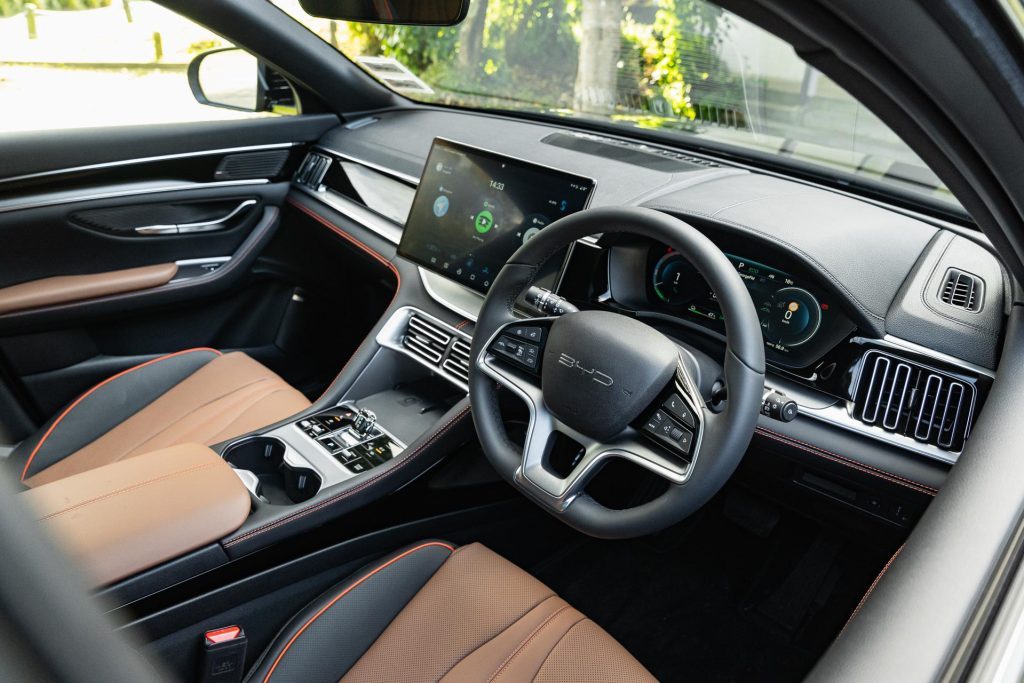
980km:
We make it to Kaiapoi and decide to keep heading south. We made an observation in the Hundalee range south of Kaikoura that the DM-i system seems at its best when it has elevation changes to recharge itself.
The extra battery capacity means it can power up hills efficiently with an electric boost and regenerate down them. The Canterbury Plains seemed to be taking a bigger toll on range.
1050km:
The distance-to-empty hits zero, or at least it refuses to display a total anymore.
1070km:
We hit the vehicle’s predicted range as we run through the back of Ashburton on yet another diversion. We grab a 5L jerry can of fuel just in case.
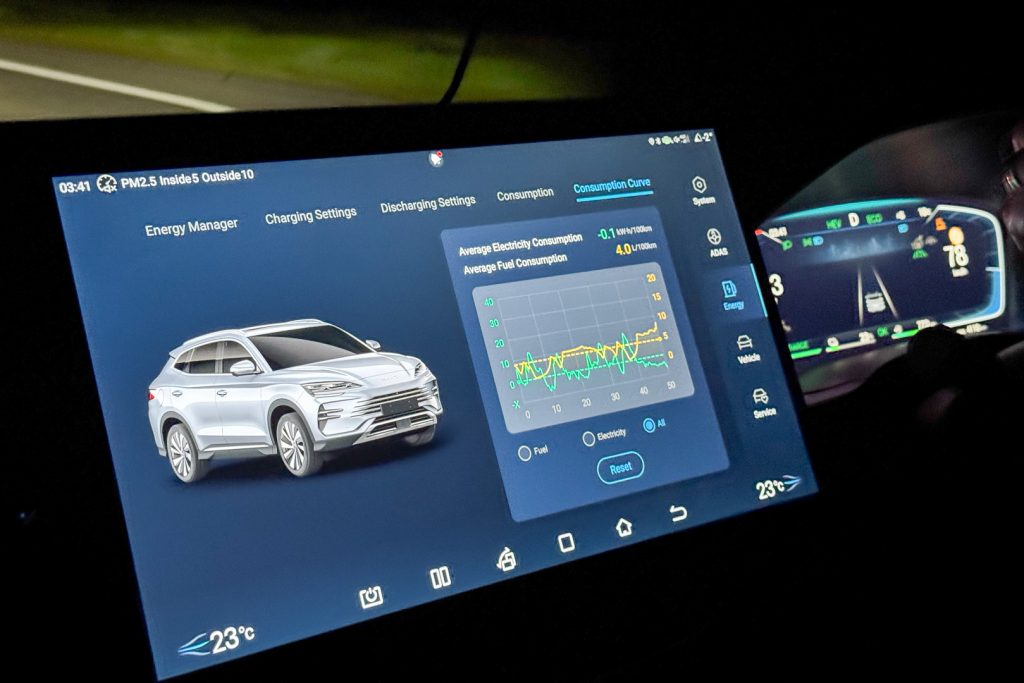
1100km:
At Hinds, we hit 1100km. The car is still running, though our brains are beginning to suggest it is making signs that it might run out. It wasn’t.
We’ve switched the electric range meter from percentage to distance, and it says when the petrol is gone, we may have 7km to go.
1157km:
We are calling it on the shores of Caroline Bay. While still safe to drive, we have work to do the next day, and this car shows no sign of stopping. We still have electric range in hand.
1180km:
The engine becomes reluctant to kick in, and this is looking like it. We contemplate pulling into Temuka for fuel, but with electric range left and a jerry can in hand, we go for broke.
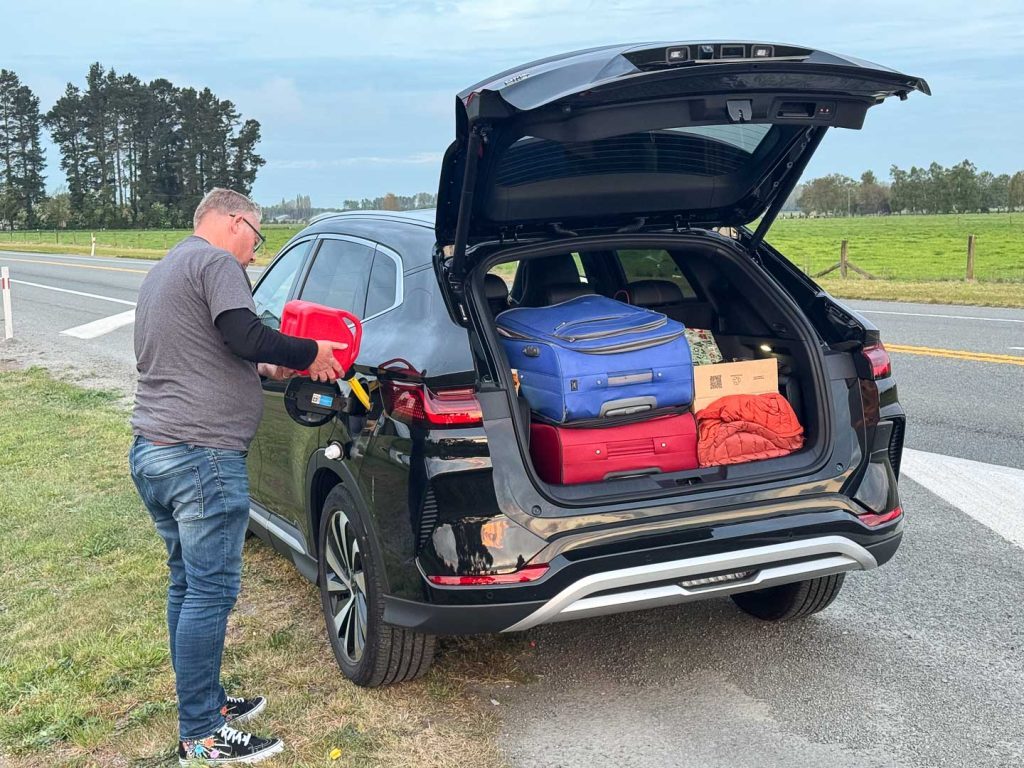
1186km:
North of Winchester and just south of the Orari ChargeNet DC charger, we finally pull over to the side of the road.
We likely could have made the charger, the car can clearly run on battery alone with no fuel, but with speed rapidly reducing to 45km/h and the sun setting, it’s safety first.
We fill the tank, and it fires to life, revving high to supply power and charge the battery initially, settling immediately back to normal after a short charge.
Final Thoughts
First, the numbers: 1186km covered, 61.6 litres of fuel used, the battery exhausted, and an average for the trip of 5.19L/100km.
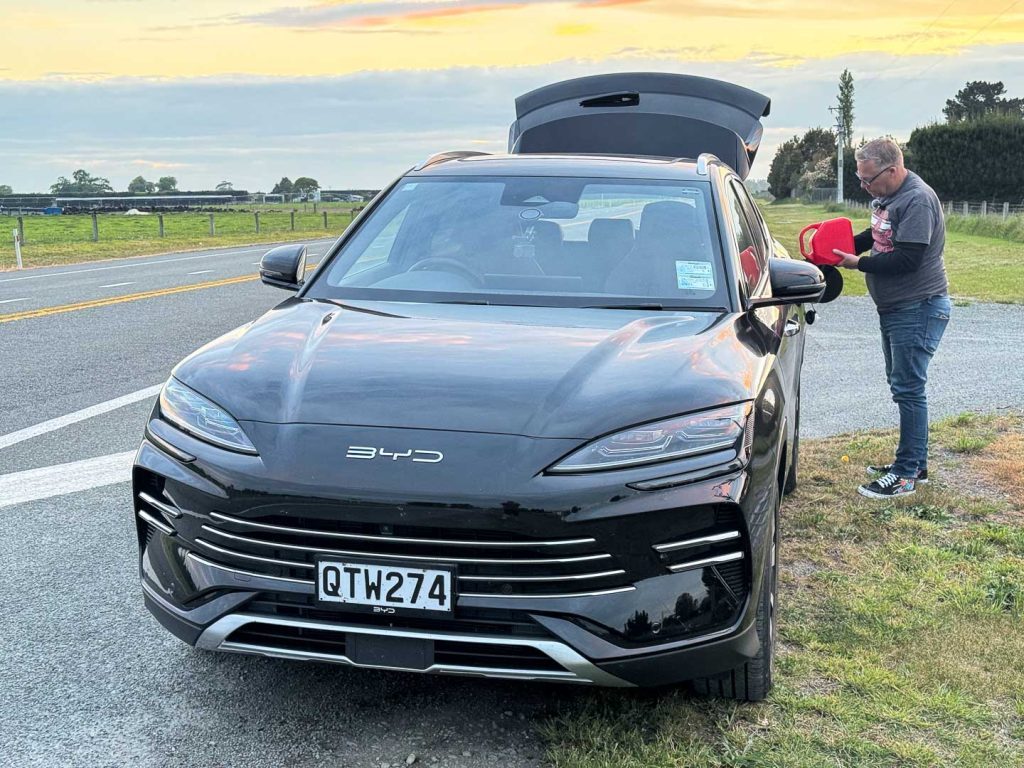
In isolation and without context, those figures aren’t massively surprising—a RAV4 can use less fuel per 100km theoretically but not hit the range, and there are diesel vehicles that can hit the range number, but they are pretty impossible to find now.
For the moment, BYD’s DM-i platform is doing something very special. And the technology we have here is not even their latest and greatest.
We also need to hand it to the Sealion 6—it was a comfortable, capable partner for over 17 hours of driving.
We also think it could do more. Take out the load, drive in hypermiling fashion, and it could easily hit 1300km in my estimation.
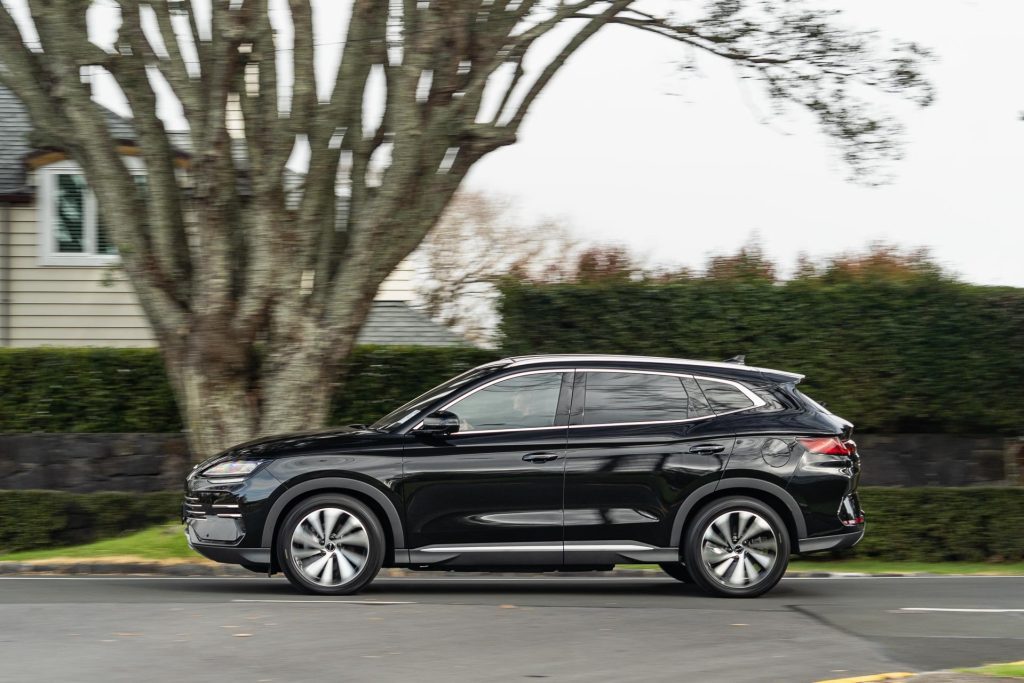
BYD has threatened us with landing a prototype Qin sedan, with a range of over 2000km. Now that would be a mighty challenge. Only it won’t be in one go, of that I can assure you!
This article first appeared in the December/January 2025 issue of NZ Autocar magazine.


